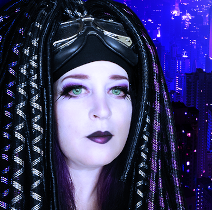Fish Dye - Swaankoler
Fish Dye, or Swaankoler is an exotic dye harvested from fish who roam The Mid-Summer Sea. It is used for painting, colouring fabric, dying materials, ceremonies, and cultural festivals.
Properties
Material Characteristics
The most common form of Swaankoler is a crushed, soft powder. The powder will be sold at markets in its loose form, with customers needing to bring their own jars to weigh their purchase and bring it home.
Geology & Geography
There are several fish who swim in The Mid-Summer Sea that hold a unique organ called a fish pouch. It is this organ, that can be peeled like the membrane of an orange segment, to retrieve a soft, squishy substance that can be turned into dye powder. Groups of people working in fisheries along the coasts of islands around the Southern Isles can be found sitting on benches, wearing gloves and carefully segregating the fish parts.
Origin & Source
Due to the dye's name, many linguistics and theorists question whether the practice of collecting Swaankoler originally comes from the Southern islanders themselves, as the name does not follow local language or dialect patterns. Regardless, Swaankoler is an integral part of many Southern Isle cultures.
History & Usage
Cultural Significance and Usage
While each island on the Southern Isle archipelago holds unique culture, ceremonies and festivals, a unifying factor between the island cultures is that all Southern Isle folk are deemed kin. For this reason, Southern Isle folk are welcome to participate in each others' cultural events. Swaankoler is used by the islands in diverse ways.
On the island of Suwa-Isuaihovwenaparvu - The village of the Isle of Love, Hope and New Beginnings, the local culture blends the dye into a special pouring paint which is used for collaborative pouring art, called Acula. To construct the art, islanders use a special stone tablet called a suit, which is placed on top of a table. The suit is designed to catch any loose paint, preventing it from staining the sand below. The canvas is placed inside the suit and is usually around a metre and a half on both sides. Participants greet and welcome each other to the event, and then may pour paint onto the canvas when and as they please. Acula events are prearranged, and are usually social affairs. Aculas may be themed for guests who are particularly shy, or may have a mental health or counselling theme. Other Acula events may be for a group of long-time friends, or family gatherings for a birthday, new child or other celebration.
On the island of Suwa-Isunawai - The village of the Isle of Night, the local culture blends the dye with florescent substances to create colourful glass prism art that glows at night. The prisms are first constructed, and vary in shape. The dye is then carefully blended with florescent substances so they may glow at night, and then poured into the prism, layer by layer. The structures are often set upon the coast, which not only provide stunning art, but also may help light the way. The structures represent a celebration of colour, the Variegation Tides, the diversity of Gaia, each point throughout the day, and the diversity of the islands. If for some reason the prism becomes broken, possibly due to a stray wave or a naughty Surfing Monkey, islanders retrieve the work and carefully dismantle it, to reuse materials again for other projects.
On the island of Suwas-Shuckjansol - The villages of the First Mountainous Region, the dye is used as signals to communicate with one another from far away. It is placed in a canon which is fired, creating a strong colour that can be seen miles across the mountainous terrain. Different colours represent meanings, and sometimes colours can be fired one after another for more complex messages. On Elsuubawa, the day of patriotic defence, the canons are fired as part of a celebration of the Southern Isle's culture of unity and history of independence.
Type
Organic
Color
Swaankoler comes in many vivid colours, including blue, purple, pink, red, orange and green

by Anni Roenkae

by Ravi




I love the very different applications for this dye! I think my favorite are the fluorescent prisms. It's such a beautiful idea to combine art with practical lighting.
Creator of the Kaleidoscope System and the planet Miragia.
I'm glad you liked this article! When I was younger, I used to love going through the lights and lamps section in shops and watch all the glowy-glowy things, aha. If my parents couldn't find me, they'd know where to look, I was a little moth!